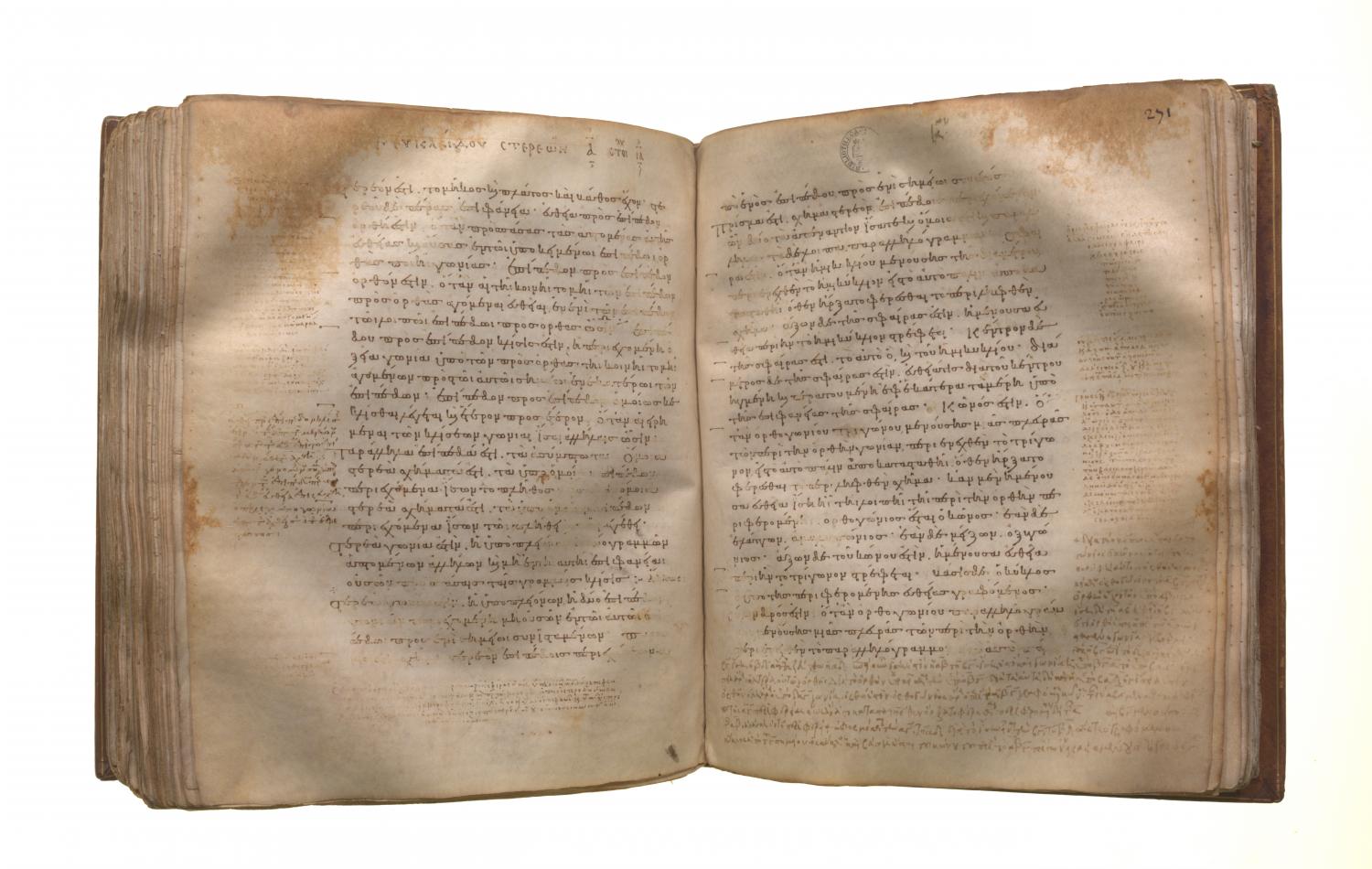Translations
1. A solid is that which has length, breadth, and depth.
2. An extremity of a solid is a surface.
3. A straight line is at right angles to a plane, when it makes right angles with all the straight lines which meet it and are in the plane.
4. A plane is at right angles to a plane when the straight lines drawn, in one of the planes, at right angles to the common section of the planes are at right angles to the remaining plane.
5. The inclination of a straight line to a plane is, assuming a perpendicular drawn from the extremity of the straight line which is elevated above the plane to the plane, and a straight line joined from the point thus arising to the extremity of the straight line which is in the plane, the angle contained by the straight line so drawn and the straight line standing up.
6. The inclination of a plane to a plane is the acute angle contained by the straight lines drawn at right angles to the common section at the same point, one in each of the planes.
7. A plane is said to be similarly inclined to a plane as another is to another when the said angles of the inclinations are equal to one another.
8. Parallel planes are those which do not meet.
9. Similar solid figures are those contained by similar planes equal in multitude.
10. Equal and similar solid figures are those contained by similar planes equal in multitude and in magnitude.
11. A solid angle is the inclination constituted by more than two lines which meet one another and are not in the same surface, towards all the lines.
Otherwise: A solid angle is that which is contained by more than two plane angles which are not in the same plane and are constructed to one point.
12. A pyramid is a solid figure, contained by planes, which is constructed from one plane to one point.
13. A prism is a solid figure contained by planes two of which, namely those which are opposite, are equal, similar and parallel, while the rest are parallelograms.
14. When, the diameter of a semicircle remaining fixed, the semicircle is carried round and restored again to the same position from which it began to be moved, the figure so comprehended is a sphere.
15. The axis of the sphere is the straight line which remains fixed and about which the semicircle is turned.
16. The centre of the sphere is the same as that of the semicircle.
17. A diameter of the sphere is any straight line drawn through the centre and terminated in both directions by the surface of the sphere.
18. When, one side of those about the right angle in a right-angled triangle remaining fixed, the triangle is carried round and restored again to the same position from which it began to be moved, the figure so comprehended is a cone. And, if the straight line which remains fixed be equal to the remaining side about the right angle which is carried round, the cone will be right-angled; if less, obtuse-angled; and if greater, acute-angled.
19. The axis of the cone is the straight line which remains fixed and about which the triangle is turned.
20. And the base is the circle described by the straight line which is carried round.
21. When, one side of those about the right angle in a rectangular parallelogram remaining fixed, the parallelogram is carried round and restored again to the same position from which it began to be moved, the figure so comprehended is a cylinder.
22. The axis of the cylinder is the straight line which remains fixed and about which the parallelogram is turned.
23. And the bases are the circles described by the two sides opposite to one another which are carried round.
24. Similar cones and cylinders are those in which the axes and the diameters of the bases are proportional.
25. A cube is a solid figure contained by six equal squares.
26. An octahedron is a solid figure contained by eight equal and equilateral triangles.
27. An icosahedron is a solid figure contained by twenty equal and equilateral triangles.
28. A dodecahedron is a solid figure contained by twelve equal, equilateral, and equiangular pentagons.
